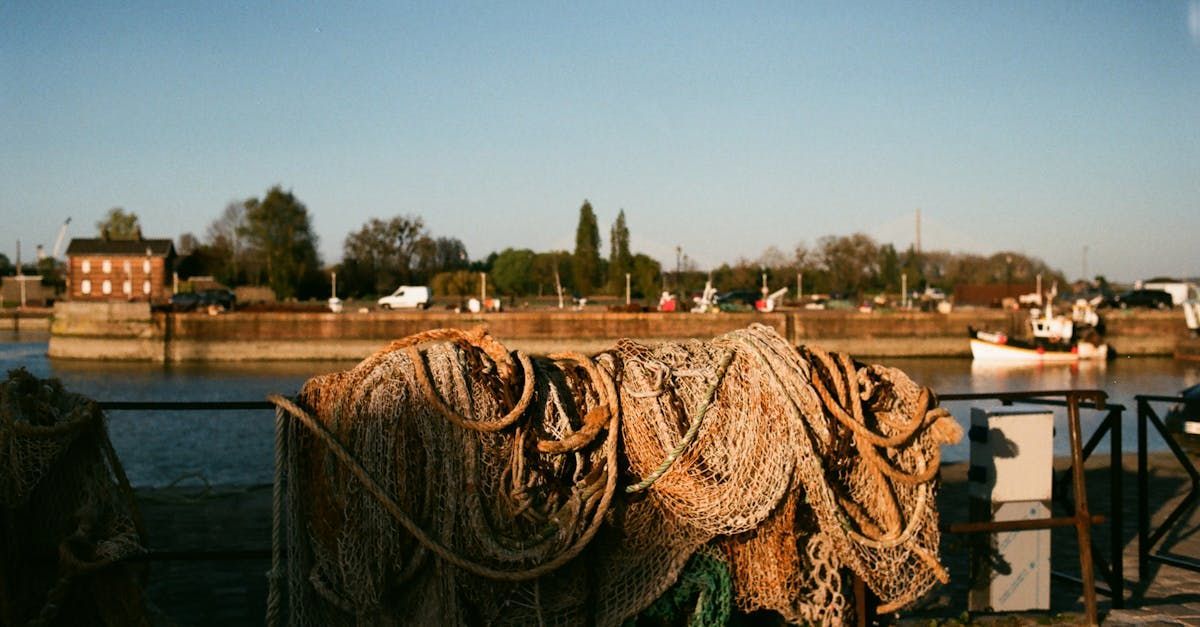Dock Building and Construction: A Guide to Waterfront Enhancement in Charleston

Dock building and construction is a vital aspect of waterfront property development in Charleston, South Carolina. This process involves creating sturdy structures that extend from the shore into the water, providing access for boats and enhancing the overall value of waterfront real estate. In Charleston's unique coastal environment, dock construction requires careful planning, expert knowledge, and adherence to local regulations.
Key takeaways:
- Dock construction in Charleston must account for tidal changes and coastal conditions
- Permits are required from local and state authorities before starting any dock project
- Materials like pressure-treated lumber and composite decking are popular choices for Charleston docks
- Professional marine contractors can navigate complex regulations and ensure structural integrity
- Regular maintenance is crucial for the longevity of docks in Charleston's salt water environment
Understanding the Basics of Dock Construction
Dock building in Charleston starts with a thorough understanding of the local waterways and environmental factors. The city's location on the Atlantic coast means that docks must withstand significant tidal changes, potential storm surges, and the corrosive effects of saltwater.
Site assessment and planning
Before any construction begins, a detailed site assessment is necessary. This involves examining the water depth, bottom conditions, and shoreline characteristics. In Charleston, many areas have a soft, muddy bottom, which can impact the type of foundation needed for the dock.
Choosing the right dock type
There are several types of docks suitable for Charleston's waterways:
- Fixed docks: These are permanent structures anchored to the seafloor.
- Floating docks: These rise and fall with the tides, making them ideal for areas with significant water level changes.
- Hybrid docks: A combination of fixed and floating sections, offering flexibility and stability.
The choice depends on factors like water depth, tidal range, and intended use of the dock.
Navigating Charleston's Dock Building Regulations
Building a dock in Charleston requires navigating a complex web of regulations. The city has strict rules to protect its natural resources and ensure public safety.
Obtaining necessary permits
Before starting any dock construction project in Charleston, you'll need to obtain permits from various agencies:
- South Carolina Department of Health and Environmental Control (DHEC)
- U.S. Army Corps of Engineers
- City of Charleston
The permitting process can be lengthy, often taking several months. It's crucial to start this process early in your planning stages.
Understanding local zoning laws
Charleston's zoning laws impact dock construction. These laws dictate factors like:
- Maximum dock length
- Setback requirements from property lines
- Allowable materials
It's important to work with a local marine contractor who understands these regulations and can help ensure your dock design complies with all local laws.
Selecting Materials for Dock Construction in Charleston
The harsh coastal environment of Charleston demands careful consideration when choosing materials for dock construction. The right materials can significantly extend the life of your dock and reduce maintenance needs.
Pressure-treated lumber
Pressure-treated lumber is a popular choice for dock construction in Charleston due to its affordability and resistance to decay. However, it's important to use lumber treated for marine use, which offers better protection against saltwater and marine borers.
Composite decking
Many Charleston dock owners are opting for composite decking materials. While more expensive upfront, these materials offer several advantages:
- Resistance to rot and decay
- No splinters
- Low maintenance requirements
- Long lifespan
Metal components
For structural elements like pilings and hardware, stainless steel or hot-dip galvanized steel are often used due to their corrosion resistance.
The Dock Construction Process
Building a dock in Charleston typically follows these steps:
- Site preparation
- Installation of pilings
- Construction of the main structure
- Decking installation
- Addition of accessories (cleats, ladders, etc.)
Pile driving
Pile driving is a critical part of dock construction in Charleston. The soft, muddy bottom in many areas requires deep pilings to provide adequate support. Specialized equipment is used to drive these pilings into the seafloor.
Framing and decking
Once the pilings are in place, the frame of the dock is constructed. This typically involves installing joists and beams to create a sturdy structure. The decking is then laid on top of this frame.
Environmental Considerations in Charleston Dock Construction
Charleston's rich coastal ecosystem requires careful consideration during dock construction to minimize environmental impact.
Protecting marine life
Dock construction can disrupt marine habitats. To mitigate this, construction methods that minimize disturbance to the seafloor are preferred. Additionally, using materials that don't leach harmful chemicals into the water is crucial.
Erosion control
Docks can affect water flow and potentially increase erosion. Proper design and construction techniques can help minimize these effects. This might include using erosion control measures during construction and designing the dock to allow for natural water flow.
Maintenance and Care for Charleston Docks
The saltwater environment of Charleston can be tough on docks. Regular maintenance is essential to prolong the life of your dock and ensure its safety.
Regular inspections
Conducting regular inspections of your dock can help catch small issues before they become big problems. Look for signs of:
- Wood rot
- Loose or corroded hardware
- Damage from boat impacts
- Shifting or settling of pilings
Cleaning and preserving
Regular cleaning can help prevent the buildup of marine growth and extend the life of your dock. For wooden docks, applying a sealant every few years can provide additional protection against the elements.
Working with Professional Dock Builders in Charleston
While some homeowners might be tempted to tackle dock construction as a DIY project, working with professional dock builders in Charleston offers several advantages:
- Knowledge of local regulations and permitting processes
- Experience with Charleston's unique coastal conditions
- Access to specialized equipment
- Ability to handle complex structural calculations
- Warranty on workmanship
Choosing a dock builder
When selecting a dock builder in Charleston, consider the following:
- Experience with similar projects in the area
- Proper licensing and insurance
- References from past clients
- Knowledge of local regulations
- Quality of materials used
Enhancing your Charleston dock
Once your basic dock structure is in place, there are many ways to enhance its functionality and aesthetic appeal:
- Adding a boat lift for easy access to your vessel
- Installing fish cleaning stations for anglers
- Incorporating seating areas for relaxation
- Adding lighting for safety and ambiance
- Installing water and electrical hookups
Dock accessories popular in Charleston
Some popular dock accessories among Charleston waterfront property owners include:
- Kayak and paddleboard racks
- Rod holders for fishing
- Dock boxes for storage
- Swim ladders
- Bumpers and cleats for boat protection
The Impact of Climate Change on Dock Construction in Charleston
Climate change is having a significant impact on coastal areas like Charleston, and this affects dock construction practices.
Rising sea levels
Charleston is already experiencing the effects of rising sea levels. This means that docks need to be designed with future water levels in mind. Some strategies include:
- Building docks at higher elevations
- Using floating dock designs that can adapt to changing water levels
- Incorporating more robust materials that can withstand increased exposure to water
Increased storm intensity
With the potential for more intense storms, docks in Charleston need to be built to withstand higher winds and storm surges. This might involve:
- Using stronger structural components
- Incorporating breakaway features to prevent total dock loss in severe storms
- Designing docks with storm surge in mind
The Future of Dock Building in Charleston
As technology advances and environmental concerns grow, the future of dock building in Charleston is likely to see some changes.
Sustainable materials
There's a growing trend towards using more sustainable materials in dock construction. This includes:
- Recycled plastic lumber
- Bamboo decking
- Eco-friendly concrete alternatives for pilings
Smart dock technology
The integration of technology into docks is becoming more common. This might include:
- Solar-powered lighting and electrical systems
- Remote monitoring systems for tide levels and dock condition
- Automated boat lifts and security systems
Conclusion
Dock building and construction in Charleston is a complex process that requires careful planning, adherence to regulations, and consideration of the unique coastal environment. Whether you're building a new dock or renovating an existing one, working with experienced professionals can help ensure your project is successful and compliant with local laws. With proper construction and maintenance, a well-built dock can provide years of enjoyment and add significant value to your Charleston waterfront property. For more information, you can visit our website or contact us.


